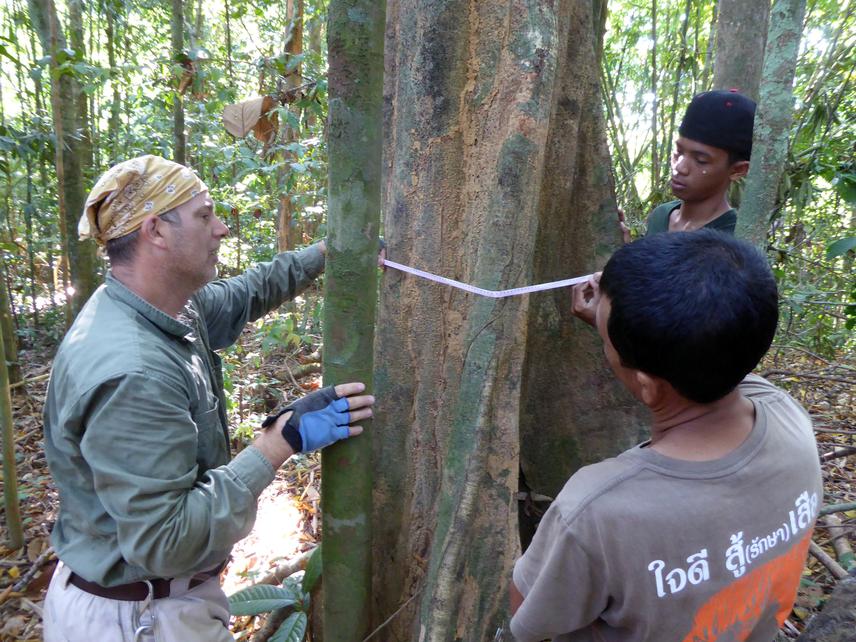Gregory James Irving
This study seeks to understand the pattern of avian species richness and abundance in areas impacted by flooding and fragmentation due to construction of a hydroelectric dam.

Training of field team for survey of forest structure.
Deforestation and fragmentation pose serious threats to ecosystems worldwide. This is a particular challenge in the Sundaic region of South-east Asia, where lowland forest is rapidly being lost due to insatiable consumer demand for rubber and palm oil. In 1986, the Royal Thai Government constructed the Rachaprabha Dam, flooding 165km2 of lowland habitat in the largest remaining contiguous forest in Southern Thailand, and thus creating the Chiew Larn reservoir. Approximately 160 hilltops were transformed into island communities.
This aim of this study is to explore forest-dependent bird species diversity, offering comparison of species richness and abundance between islands and mainland ecological communities with reference to dietary guild. The study hypothesizes that the mainland will have higher species richness than islands, and larger islands will have higher species richness than small islands. Insectivores should show particular sensitivity to fragmentation. Certain omnivores and edge habitat species may be over represented on some islands.
Using distance methods, 10-minute audio point counts will be undertaken on 10 mainland sample sites and 23 island sample sites of varying size. Nearly 70 hours of audio will be recorded during peak vocalisation periods. Representative species of three main dietary guilds will be selected for further study to determine relative abundance. Basic data will be collected on habitat structure. By focusing on the relative presence and abundance of avian dietary guilds, indirect insight will be provided on underlying factors (i.e. presence or absence of food resources, predation, competition). In addition, the audio data offers important data on the composition of the avian community in this under-studied forest complex.
The wildlife sanctuary has recently been opened to ecotourism, which may negatively impact flora and fauna. Community outreach and training are planned with involvement of government counterparts, for improved implementation of ecotourism. While contributing to existing literature on small mammal communities within the reservoirs, it is hoped that this study will prompt additional questions for further study. Research findings can be applied to improve the policies, strategies, and management of fragmented habitats within the reservoir and across Thailand.